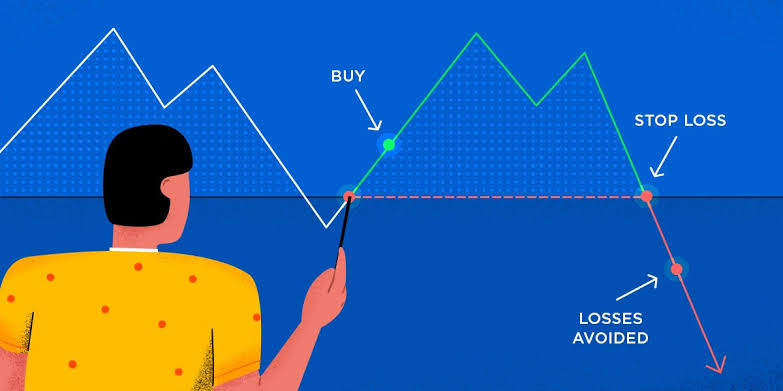26 May 2021
Importance of Stop Loss

What is Stop Loss?
Stop-loss is an automatic order to purchase or sell shares until a certain amount is met, usually referred to as the stop price. The command is immediately enforced in the case of a stop failure. Investors use this strategy to keep their risks to a bare minimum. Stop-loss is a principle that may be applied to both short and long-term investing. When an investor places a stop-loss order, the broker or agent is instructed to offer the protection until it reaches a predetermined price cap.
This is a concept or tool that is used to manage short-term investments. This is particularly helpful for investors who are too distracted or unable to track stocks regularly. The exchange is immediately activated here, and the limits are set ahead of time.
If you're a financial exchange investor, you can't afford to neglect the idea of stop losses. A stop-loss serves as a safeguard for your exchange. Stop losses must be imposed regardless of whether you are trading long or short. Markets are inherently unpredictable, and it is difficult to forecast how far they may decline. Furthermore, markets have a propensity to respond aggressively to negative news flows, and if you do not use a stop loss, your losses can intensify to the point that your trading capital is placed at risk. That is why a trader's stop losses are so essential.
Working of Stop loss
A trader who buys the stock at Rs.45 per share could place a stop-loss order to sell his shares at Rs.40 per share, effectively closing out the exchange. It essentially reduces the investment's exposure to a cumulative loss of Rs.5 per share. The order would be performed immediately if the market price declines below Rs.40 a share, effectively closing out the trade. Stop-loss instructions may be handy when a trader's spot is subjected to a significant and rapid market change toward it.
A trader who purchases the stock at Rs.45 per share, for example, might put a stop-loss order to sell his securities at Rs40 per share, potentially closing out the exchange. It effectively decreases the investment's exposure to Rs.5 per share accumulated loss. If the stock price falls below Rs.40 per share, the order would be executed automatically, essentially closing out the trade. When a trader's position is exposed to a significant and fast price shift against it, stop-loss orders may be beneficial.
Stop loss is an very cruicial part intrading, one need to have proper command on this to learn this under the guidence of astute you need to join share market training in Indore, so the you can trade with proper safety.
Importance of stop loss
Let's look at why a stop loss is so essential for a trader now that we've grasped the idea of one. It is difficult to overstate the value of a stop loss in trading. What is the right stop-loss plan, and how can you implement it? What, above all, are the advantages of a stop loss for a trader? Here are five explanations why a trader's stop losses are so essential.
1. Stop-losses are used in dynamic trades to eliminate significant and uncontrollable losses. If you don't use stop-losses, a significant losing stake will quickly spiral out of reach, wiping out the majority of your trading earnings and, ultimately, the whole portfolio!
2. Stop-loss orders can be included in any transaction you make if you want to remain in the market in the long run and expand your trading account. Still use stop-losses. That's the first law!
3. Stop-losses are often very important in risk control. Traders calculate what stake size to take based on their stop-loss, how much capital to lose on a particular transaction, how much they risk on any rupee they make, and much more based on their stop-loss.
4.The use of a stop loss encourages traders to be more disciplined in their trading. Trading aims to get a clear understanding of your risk-reward trade-off in each trade. This is only feasible if you plan ahead of time and establish your stop loss and benefit goals.
5. When it comes to market uncertainty, the only defense is a stop failure. Price instability is all you have to accept by nature. The only way out is to place sufficient stop-losses in place when selling to cover yourself from the downside danger.
6. You will estimate how much of your portfolio is at risk by multiplying the possible loss by the number of available trades with stop losses. This serves as a prompt if you need to reduce the chance by correctly cutting your jobs.
7. The use of a stop loss allows you to churn your money. Your main goal as an investor is to keep stirring your money and compounding your gains daily. Stop losses get you out of positions where you're trapped in pointless trades and risk losing money.
Different types of Stop Losses
Although a stop-loss order is often a stop-loss order, traders use them in different forms. There are four major categories of stop-loss thresholds, depending on how traders define possible stop-loss levels: charts stop, volatility stops, time stops, and percentage stops.
1. Chart stop: The most common method to use stop-loss instructions is chart stops. Help and opposition areas, trendlines, Fibonacci levels, Elliott Wave levels, and chart trends, to name a couple, are all dependent on significant technical levels on the chart. A trader who wants to go long will set a chart stop just below a critical technical stage. The theory behind this method is that vital thresholds on a map would have a higher amount of buy orders, so market players who skipped the original jump will choose to enter at a lower price.
If the floor is broken, a position would be immediately closed if the stop-loss is placed just below it (such as horizontal support levels). Similarly, traders who want to short stock will set a chart stop just over a critical technical stage. Resistance regions are projected to have a higher number of sales requests, which could cause the price to reverse.
2. Volatility Stop: Volatility stops, unlike chart contains, are dependent on the volatility of the financial asset you're interested in trading. The sum of market adjustment over a certain period is referred to as volatility. A dynamic market experiences significant price fluctuation over short periods, whereas a market with little uncertainty does not shift at all. While delay will raise risk, a market that is not volatile offers no trading opportunities.
3. Time stop: Time stops, as their name implies, apply to the closing of a transaction after a certain amount of time has passed. A day trader, for example, could close all of his open trades at the end of the trading day, while swing traders who don't want to keep their trades through the weekend could quickly close all of their transactions at the end of the Friday trading session. Time stops work better when used in conjunction with other forms of stop-loss stages. If your trade is still open at the end of the trading day or until the weekend, you will want to close it manually.
4. Percentage stop: To minimize the potential risk of a sale, percentage stops are calculated as a percentage of your trading account.
Summary
Stop-loss orders will have a significant impact on your investing, risk control, and overall results. They're an essential component of any profound risk control and trading approach, and they can fit into virtually any trading strategy.
